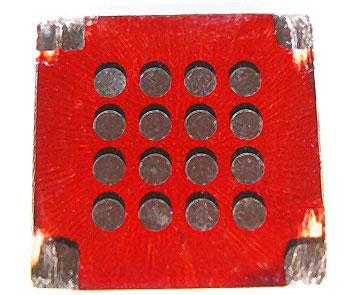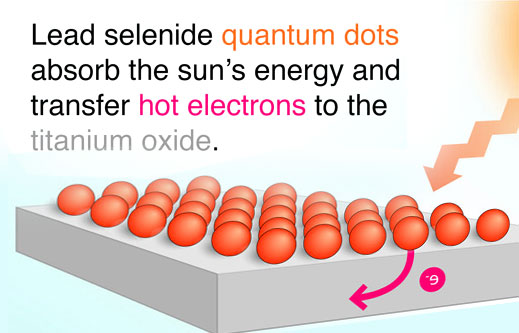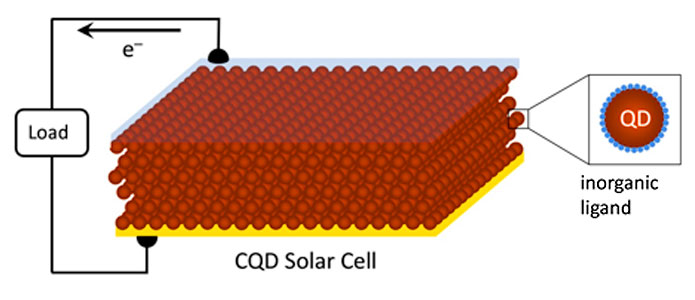Increasing the performance of solar cells to make them as the best form of alternative energy has indeed become an urgent task for researchers across the globe. The main idea is to make solar cells efficient and cost effective at the same time. Now, the traditional photovoltaic cells that are used to trap solar energy are quite expensive, therefore people have to suffer from high manufacturing cost and installation too. So, to answer these concerns researchers have developed a unique technology known as the quantum solar cells. These are the next generation of solar cells which are basically semiconductor quantum dots QD sensitized to form solar cells. The QD cells can be denoted as a derivative to the dye sensitized solar cells (DSC), which was first introduced in 1981. The DSC use organic dye such as complexes of ruthenium polypyridine, so that greater amount of light can be harvested from the sun. But, the only problem with these cells was that it was not that easy to find these organic dyes for increasing the efficiency of DSC.

The common QD or Quantum Dots that from the part of the solar cells are nanocrystals that acts as semiconductors. These crystals are so small that they can interact with the help of Nano mechanics. QD has always been the prime highlight of research in quantum mechanics; the main reason behind this was that these dots portrayed promising results when induced with the application of solar cells, lasers, transistors and other vital components. For solar cells, QD can be used as an important tool for capturing the solar energy from the sun, acting as a photovoltaic material. The benefits of using QD in solar cells is that, quantum dots have certain band gaps, and these band gaps can be turned without any complications. To turn them only the size of the nanocrystals should be changed and the band gaps will be changed automatically. This helps the solar cells in capturing the solar energy from different parts of the solar spectrum.

Hence, QD has high affinity to the multi-junction of the solar cells, and when a series of such QD dots are used for capturing the solar energy then they can absorb the photovoltaic light in an efficient manner. With this idea, the cost that is required for manufacturing solar cells can be reduced drastically and even the complexities that are required for building the traditional solar cells can be decreased too.Best thing will be using just one single junction of QD, and here the dots can be turned for absorbing light from infrared too, as this the region where almost 60% of the energy from the sun is present, however, managing this would be quite challenging for the traditional solar cells. Therefore, QD can be one of the best means of increasing the performance of the normal solar cells so that it can induce large amount of charge from the sun.
Earlier there were costly components used in the production of QD solar cells, such as the molecular beam epitaxy, this is a common method that is used for depositing numerous amount of crystals at a particular substrate. But, later cost effective components were derived to decrease the manufacturing costs of QD solar cells. The fabrication technology that is used today, in the making of QD solar cells uses colloidal quantum dots which are amalgamated with concentration solutions to fix to the solar cells.
These concentrated nanocrystals are stabilized with the help of hydrocarbon ligrands, which keeps them suspended in the solution. For creating the solid form of quantum dots, the solution is filtered out, and the hydrocarbon ligrands stabilize and replace the short linked chains of QD. With the help of chemical engineering the nanocrystals of the solution passivate in a much better way. There have been many studies to improve the efficiency of QD solar cells. One such important piece of research portrayed that with the help of different ligrands different functions of the band alignment can tuned and this can improve the performance of the QD cells to about 8.6%. Recently, in 2014 iodine was introduced as ligrands for the production process, as it creates a unique balance between the p type and n type layers of the QD cell that boosts the absorption level of these cells and increases their efficiency to about 10%, four times better than the band alignment process which was used earlier.


As mentioned earlier, the basic advantage of using Quantum solar cells over traditional ones is that QD solar cells have the ability to produce double the charge that is produced by solar cells. The main reason behind that is that QD solar cells have the ability to absorb light from each and every part of the solar spectrum and this is not possible by the traditional solar cells, and this drastically improves the performance of the QD cells and makes them better than the traditional ones. Along with that, the manufacturing costs, installation expenses and the maintenance cost of QD solar cells is quite less when compared to the traditional photovoltaic cells.